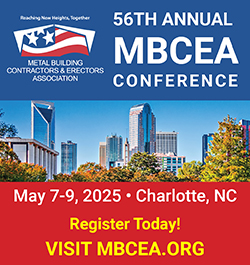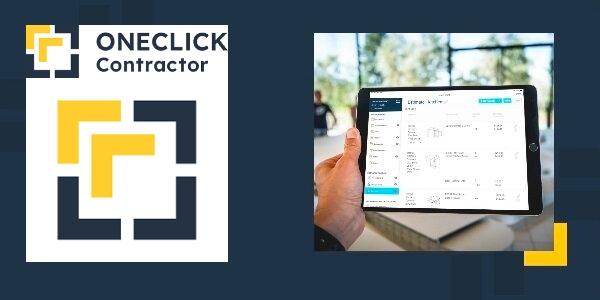UP TO THE MINUTE
Estimating with expertise
January 7, 2025 at 8:00 a.m.By One Click Contractor.
How accurate remodeling estimates can help get more clients and lead to success.
Precise cost estimates in home remodeling projects are essential. But there’s more to providing an accurate estimate than just calculating costs, such as fostering client confidence, preventing budget excesses and enhancing profit margins. This article explores how to craft accurate estimates and provides strategies for providing accurate estimates for your next remodel project.
The vital role of accurate estimating in remodeling
Getting estimates right in the remodeling business is not just about the bottom line; it's about cultivating lasting client relationships built on trust. Accurate estimates set correct expectations from the outset, ensuring that clients know what to anticipate in terms of costs and project scope. When you deliver on these expectations, clients develop trust in your professionalism and transparency, which goes a long way in fostering positive relationships. On the flip side, inaccurate estimates can lead to budgetary surprises, frustration, and eroded trust. Therefore, the art of estimating isn't just a financial matter; it's a critical factor in building client confidence and ensuring repeat business and referrals in the remodeling industry.
The financial implications of over and under-estimating
Incorrect estimates, whether they overshoot or undershoot the actual costs of a remodeling project, can have significant and lasting monetary consequences for businesses in the remodeling industry. When estimates consistently overshoot the true project costs, it can deter potential clients and result in lost opportunities. Clients may view your quotes as uncompetitive and opt for competitors with more accurate pricing, damaging your reputation and reducing your project acquisition rate. On the other hand, underestimating costs can lead to financial losses, as the actual expenses exceed what was initially quoted. This can erode profit margins and, in severe cases, even result in unprofitable projects.
In the long term, these monetary consequences can have a domino effect on your business's reputation and profitability. A track record of consistently inaccurate estimates can tarnish your reputation as clients may perceive you as unreliable or inexperienced. Word of mouth can spread quickly in the remodeling industry, and negative feedback from dissatisfied clients can hinder your ability to secure new projects. Additionally, financial losses due to underestimated project costs can strain your business's cash flow and profitability, limiting your capacity to invest in growth and maintain competitiveness.
Steps to creating accurate remodeling estimates
Creating accurate estimates for remodeling jobs is a crucial skill for contractors. Here's a systematic, step-by-step process to help contractors achieve precisely that:
1. Initial client consultation:
-
Meet with the client to understand their vision and requirements.
-
Determine the scope of work, materials and any special requests.
2. Site visit and assessment:
-
Visit the project site to assess the existing conditions.
-
Take measurements, note any structural issues, and evaluate potential challenges.
3. Create a detailed project plan:
-
Develop a comprehensive project plan that outlines the scope, tasks and timeline.
-
Specify materials, finishes and fixtures according to the client's preferences.
4. Cost estimation:
-
Calculate material costs based on quantities and prices from suppliers.
-
Estimate labor costs, factoring in the time required for each task.
-
Include costs for subcontractors, permits and any specialized services.
-
Account for waste and contingencies to cover unforeseen issues.
5. Overhead and profit margin:
-
Add overhead costs such as insurance, permits, equipment and administrative expenses.
-
Include a profit margin that aligns with industry standards and your business goals.
6. Calculate total project cost:
-
Sum up all the estimated costs to arrive at the total project cost.
7. Review and compare:
-
Review the estimate thoroughly to ensure accuracy and completeness.
-
Compare the current estimate to past estimates for similar projects to identify any potential discrepancies.
8. Present the estimate:
-
Provide the client with a detailed presentation that includes a breakdown of costs.
-
Explain any assumptions, exclusions or optional upgrades.
9. Client discussion:
-
Discuss the estimate with the client, addressing any questions or concerns.
-
Emphasize the importance of transparency and clear communication throughout the project.
10. Document everything:
-
Keep detailed records of the estimate, client communications, and any changes or additions to the scope of work.
11. Fine-tune as needed:
-
Be open to revisions based on client feedback or further developments.
-
Ensure that the final estimate accurately reflects the agreed-upon scope and specifications.
12. Continuous improvement:
-
After completing the project, evaluate the accuracy of your estimate.
-
Reflect on lessons learned and incorporate improvements into future estimates.
Importance of comparing past estimates
Comparing past estimates for similar projects is a valuable practice for contractors. It allows you to:
-
Identify trends in material and labor costs to make more accurate predictions.
-
Evaluate the effectiveness of your estimating process and refine it over time.
-
Enhance your ability to spot potential issues or deviations in project costs.
-
Build a repository of historical data that can serve as a reference for future estimates.
Incorporating these steps and using past estimates as a reference point can significantly improve your accuracy in estimating remodeling jobs, ultimately benefiting your clients and your business.
Understanding the scope of the project
Understanding the client's requirements, expectations, and project details before initiating the estimating process is paramount. It lays the foundation for an accurate estimate and a successful remodeling project. This understanding allows contractors to tailor their estimates precisely to the client's vision, ensuring that all desired features and specifications are accounted for. Plus, it helps in anticipating any unique challenges or specific needs associated with the project, which can impact costs and timelines.
Clear communication and alignment with the client's objectives from the beginning not only result in a more accurate estimate but also establish trust, reduce the likelihood of misunderstandings during the project, and ultimately lead to greater client satisfaction and successful long-term relationships.
Factoring in material and labor costs
Accurately assessing material costs and labor costs is pivotal in producing reliable estimates. To achieve this, start by compiling a comprehensive materials list with quantities and specifications. Seek multiple quotes from suppliers to compare prices and include taxes and delivery costs in your calculations. Don't forget to consider potential price fluctuations and explore bulk discounts where applicable.
Simultaneously, for labor costs, estimate the necessary labor hours for each task, incorporating factors like complexity and skill levels. Determine labor rates, accounting for experience and qualifications, and factor in labor-related expenses such as payroll taxes and benefits. Additionally, staying updated with market prices and labor rates is indispensable. Market fluctuations in materials and labor rates are common, and keeping abreast of these changes ensures your estimates remain accurate, competitive and transparent. This diligence not only enhances the accuracy of your quotes but also fosters trust with clients, bolsters profitability and minimizes risks associated with cost fluctuations.
Accounting for unexpected expenses
In the construction and remodeling industry, incorporating a buffer or contingency amount into your estimate is a pivotal practice, offering a safety net against unforeseen expenses. This financial cushion holds immense significance as it shields projects from unexpected challenges. For example, during renovations, unanticipated structural issues or hidden plumbing problems can surface, necessitating costly solutions. Likewise, shifting client preferences, market price fluctuations, weather-related delays, and regulatory obstacles can all strain project budgets and schedules. By allocating a contingency fund, you not only demonstrate preparedness but also ensure that your projects proceed smoothly, adapting to the unpredictability inherent in the construction field. Real-life examples abound where this foresight has allowed contractors to address unexpected circumstances without compromising project quality or client satisfaction, ultimately underscoring the wisdom of incorporating contingencies into estimates.
Tools and techniques for effective estimation
Modern contractors have a range of tools and software options at their disposal to enhance estimation accuracy. Specialized estimating software and real-time pricing databases provide precise cost assessments. Digital takeoff tools and BIM software streamline processes and reduce errors. Contractors can leverage historical data analysis, cost indexing, and emerging technologies to optimize profitability and competitiveness. Continuous education and expert consultation further enhance accuracy in project estimates.
Software solutions for estimation
Several prominent software solutions can streamline the estimation process and improve accuracy, making them invaluable for estimating home repair and remodeling jobs. One such solution is One Click Contractor, which offers a comprehensive platform tailored to the needs of contractors. It simplifies the estimation process, allowing contractors to create detailed and accurate estimates quickly.
These tools enable contractors to efficiently estimate both home repair and remodeling jobs, providing access to pre-built material databases, real-time pricing information and user-friendly interfaces for precise cost assessments. Integrating these software solutions into your workflow can significantly enhance estimation accuracy, saving time and reducing errors.
Common pitfalls in estimating and how to avoid them
Contractors often encounter common mistakes during the estimation process that can lead to cost overruns and project delays. Here are some of these pitfalls, along with solutions and best practices to avoid them:
- Underestimating materials costs
Solution: Utilize real-time pricing databases to ensure accurate material cost estimates. Regularly update your databases to reflect market fluctuations. - Overlooking labor costs
Solution: Create detailed task lists and accurately estimate labor hours required for each task. Factor in labor rates, benefits, and potential overtime when calculating labor costs. - Ignoring scope changes
Solution: Clearly define the scope of work in the contract and communicate any changes with the client in writing. Provide revised estimates for scope changes and obtain client approval before proceeding. - Neglecting contingency planning
Solution: Always include a contingency amount in your estimate to account for unforeseen expenses. Typically, a contingency of 5-10% is advisable, but adjust it based on project complexity and perceived risks. - Failing to account for permits and regulatory costs
Solution: Research local regulations and permit requirements early in the estimation process. Include permit fees and compliance costs in your estimate. - Not factoring in equipment and tool costs
Solution: Include equipment and tool costs, such as rentals or specialized machinery, in your estimate. Don't overlook maintenance costs for owned equipment. - Inadequate site assessment
Solution: Conduct thorough site assessments to identify any hidden issues or challenges. Consider hiring specialists for assessments if needed. - Overpromising on project timelines
Solution: Be realistic when setting project timelines. Avoid overpromising to clients, as this can lead to rushed work, quality issues and potential delays. - Insufficient documentation
Solution: Maintain detailed records of all communications, contracts, change orders and project-related documents. This documentation can help resolve disputes and ensure project clarity. - Overlooking profit margin
Solution: Don't forget to include a reasonable profit margin in your estimates. Profit is essential for business sustainability and growth. - Poor communication with clients
Solution: Maintain open and clear communication with clients throughout the estimation process. Address their questions, concerns and expectations promptly to build trust. - Relying solely on past estimates
Solution: While past estimates can be informative, each project is unique. Avoid the mistake of blindly copying previous estimates. Customize estimates based on the specific project's requirements.
By being vigilant and implementing these solutions and best practices, contractors can significantly reduce the likelihood of costly estimation errors, enhance project profitability and build stronger client relationships.
Elevate your remodeling business with accurate estimates
In the dynamic world of remodeling, the importance of precise estimates cannot be overstated. Accurate estimates are not merely numbers on a piece of paper; they are the bedrock upon which successful projects are built. They inspire trust in clients, prevent budgetary surprises, and ultimately contribute to increased profitability. In your quest to master the art of estimating, consider the wealth of modern techniques and tools at your disposal, from specialized software solutions to real-time pricing databases and digital takeoff tools. These resources are designed to help you streamline your estimation process, reduce errors and create estimates that not only meet but exceed client expectations.
For those eager to delve deeper into the art of estimating and seeking guidance on how to optimize their estimation practices, look no further than One Click Contractor. Don't miss the opportunity to excel in the art of estimating — explore your options, embrace modern tools, and take your remodeling business to new heights with One Click Contractor today. Your next successful project is just one click away.
Original article source: One Click Contractor
Learn more about One Click Contractor in their Coffee Shop directory or visit www.oneclickcontractor.com.




















Comments
Leave a Reply
Have an account? Login to leave a comment!
Sign In